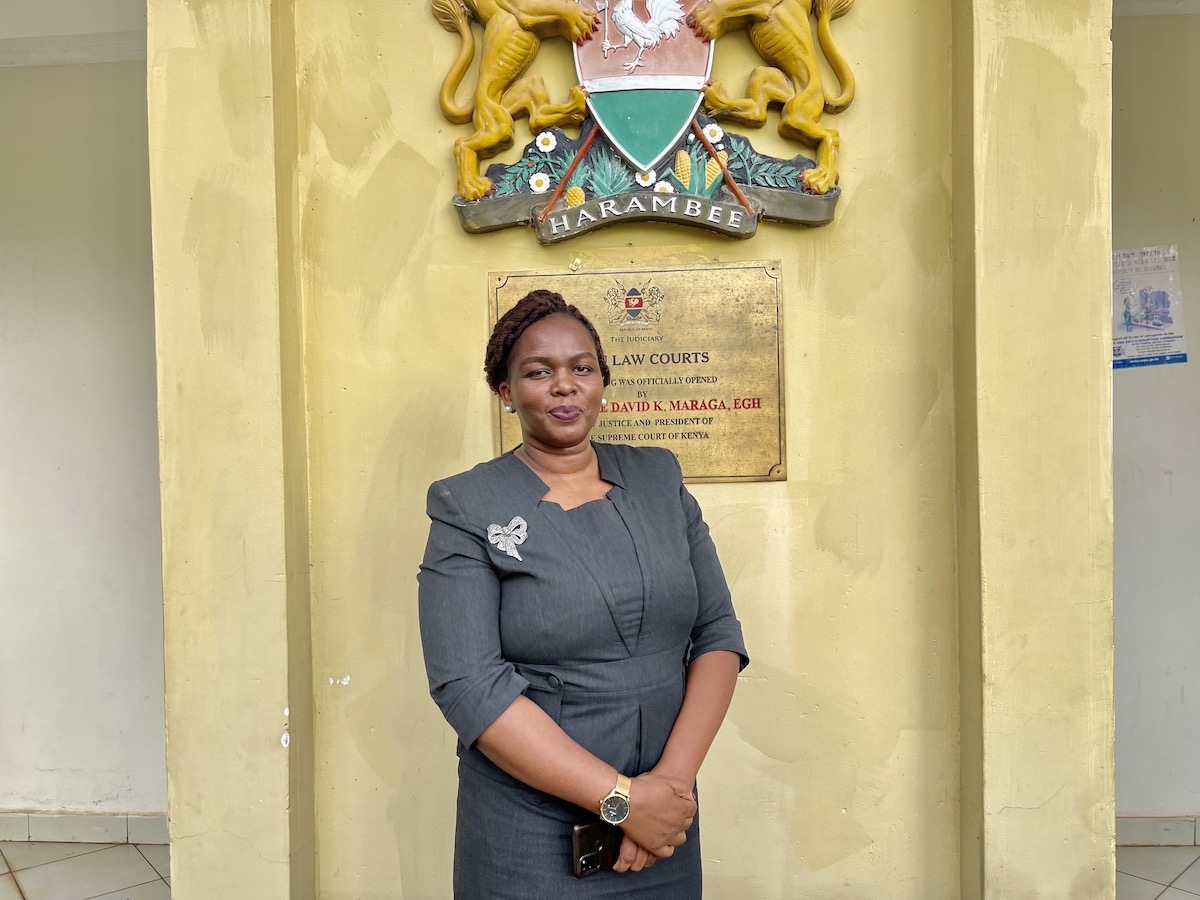The corridors of justice for sexual and gender-based violence survivors: Tamu Law Courts - Western Kenya
Date:

Every four months, Honorable Purity Kosgey, a principal magistrate and head of station at Tamu law court chairs a Court users Committee (CUC) in Muhoroni, Kisumu county. The CUC forums brings together the judiciary, justice system users, and all agencies and stakeholders to address challenges and help unblock obstacles to service delivery by courts and all actors within the justice chain - especially regarding cases of sexual and gender-based violence (SGBV).
At Tamu, the committee discusses numerous challenges affecting the justice chain for SGBV survivors such as medical cost barriers, extracting evidence from survivors with special needs, ensuring evidence is well preserved, interference of key witnesses, lack of psychosocial support/services for survivors and lack of safe shelters for survivors.
In the course of my 12 years on the bench, I have come across cases with numerous challenges, and as a judicial officer, I speak through my judgements and say what ought to have been done, and I would see the gaps but speaking through my judgement was not enough, therefore such forums help unpack such challenges.
Addressing the challenges
We have made several resolutions, for example, seeing that the medical superintendent is part of the CUC, every time we have a survivor that needs medical attention, a letter from a chief is sufficient for them to access free medical services. The police also provide free transport to hospital and court.
While more cases are recorded at the hospital, few cases reach the authorities. If it involves a child, the medical superintendent who has access to medical records gets in touch with the investigating agencies that then would lead to a criminal trial process. Unfortunately for adults, they have to want to report.
I remember we had a case of a child who had run away from home because she was experiencing violence at home, and we got this information from the children’s officer, and as the court we asked the investigative agencies to come in. The uncle was charged, and this subsequently led to a conviction.
To create awareness on GBV, the CUC also does community outreach, where we encourage communities to report. Even though we do have alternative dispute resolution (ADR) mechanisms, chiefs know that cases of GBV cannot and should not be settled out of court. It’s an offence, so chiefs play a critical role in reporting these cases. We also have human rights defenders responding to these cases.
Fast tracking SGBV cases
Thanks to the CUC and the use of technology to fast track the hearing of SGBV cases, now cases take two-three months. They used to take more than two years. We have the children testify as soon as possible because of course we know when there's a lapse of time they tend to forget.
The courts allow virtual sessions. This means, that witnesses cannot say they do not have transport, or if its doctors, they do not have time to attend court hearings.
Some cases are in court within 24 hours, where police work fast with medical practitioners, who also support filling and collecting evidence.
Sentencing GBV cases
Since July 2021 to November 2022, 45 cases of out of 62 filed have been completed.
The age of survivor determines the sentencing. Any child who is 11 years and below, the perpetrator gets a life sentence, 12-15 gets 20 years minimum sentence while 16-17 get 15 years as minimum and above 18 years is rape and it attracts 10 years imprisonment as the minimum sentence. An indecent act is 10 years.
The court also receives cases of children who engage in consensual sex. For “Romeo and Julliet cases”, since they are children, we divert the cases to protection and care, where we involve parents, provide counseling and let them go back to school as opposed to subjecting them to criminal trials.
Domestic violence cases remain a challenge as spouses sometimes later want to withdraw the case. We don’t just let the cases slide, we make use of suspended sentences, which means the perpetrator walks around with with a sentence hanging over his head, and should he be reported again then he will start serving the sentence.
Multi-sectoral response to GBV
With support from the Italian Agency for Development Cooperation (AICS), UN Women and OHCHR have been working with duty bearers to strengthen capacities of various institutions; working with rights holders to enhance their capacity and participation in VAW prevention and response; and strengthening coordination and collaboration between duty bearers and rights holders at the county and sub-county levels.
The trainings offered were a game changer because all stakeholders were brought together, including police. This was key, because no one was being left behind, and we got to share experiences on how to handle matters that come to us, and more importantly, to find solutions to our daily challenges. I have also learned some interview techniques from my investigative colleagues here.
Working together remains key to prevent and respond to GBV cases. Every quarter, we have stakeholders who donate printing paper and the court photocopies or prints statements, so we have no loopholes to adjourn cases with excuses like, I didn’t get the statements, or I don’t have transport.
The Let it Not Happen Again Project is supported by the Government of Italy in partnership with UN Women and The Office of the United Nations High Commissioner for Human Rights (OHCHR) since 2019. This project approaches prevention and response challenges to elections-related violence on multiple levels: through mapping of GBV hotspots, contingency planning, and coordination mechanisms. It has worked to strengthen grassroots organizations, to support survivors’ access to SGBV services while strengthening state mechanisms, such as law enforcement and the legal system.